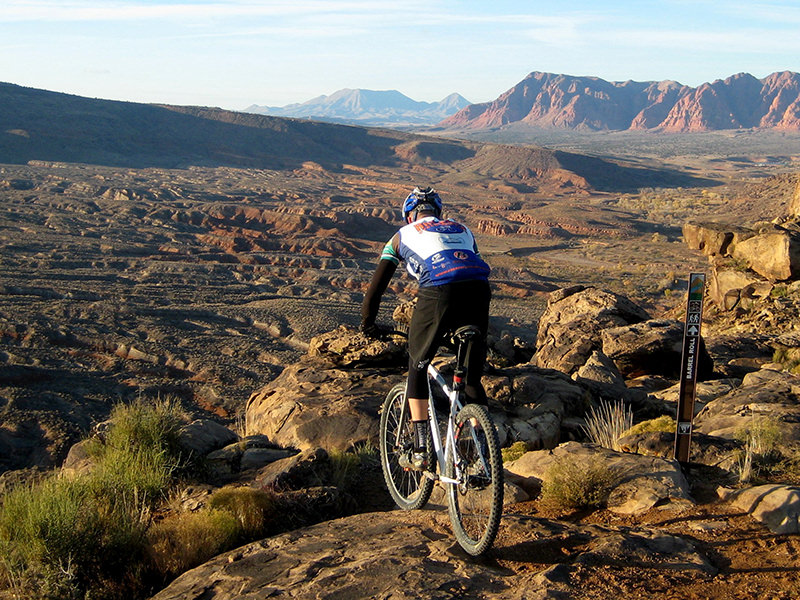Mountain bikes are typically ridden on mountain trails, fire roads, logging roads, single tracks and other unpaved environments. These types of terrain commonly include rocks, washouts, ruts, loose sand, loose gravel, roots, and steep grades (both inclines and declines). Mountain bikes are built to handle this terrain and the obstacles that are found in it like logs, vertical drop offs, and smaller boulders.
Mountain bike construction differs from a typical bicycle in many ways. The most noticeable differences are the inclusion of suspension on the frame and fork, larger knobby tires, more durable heavy duty wheels, more powerful brakes, and lower gear ratios needed for steep grades with poor traction. Since the development of the sport in the 1970s many new subtypes of mountain biking have developed, such as cross-country (XC) biking, all-day endurance biking, Freeride-biking, downhill mountain biking, and a variety of track and slalom competitions.
Each of these place different demands on the bike requiring different designs for optimal performance. MTB development has included an increase in suspension, typically up to 8″ or 203mm, and gearing, up to 30 speeds, to facilitate both climbing and rapid descents.
However, advancements in sprocket design has recently led to the “1x (pronounced one by)” trend, simplifying the gearing to one Chainring/Sprocket in the front and multiple sprockets on the rear of the drive train, more commonly, 9, 10 or 11 speed.




